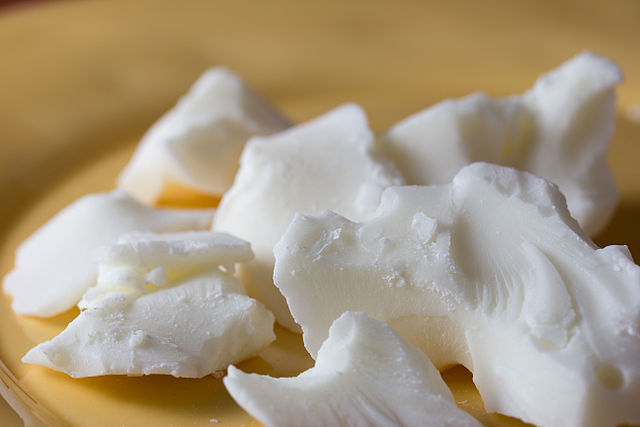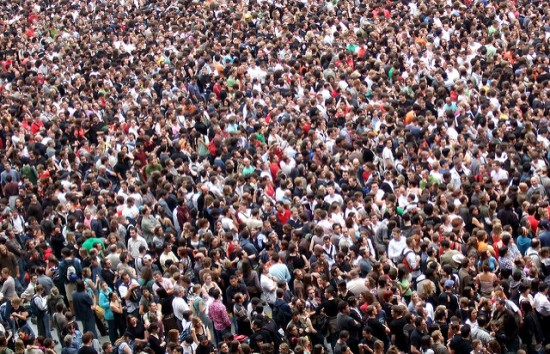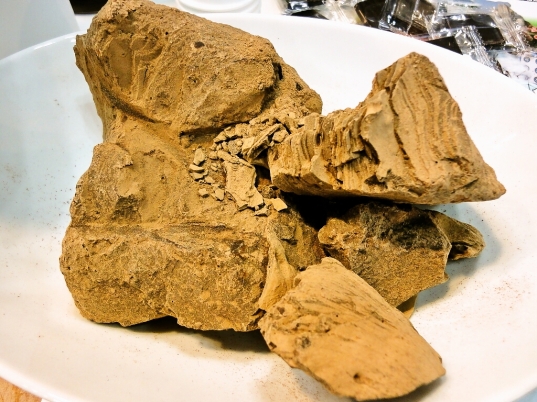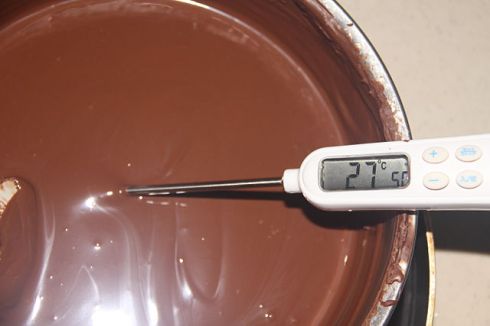A few days from now is Valentine’s Day, a day to take time to appreciate what matters the most in life… chocolate!
I’m sure you’ve seen the tiny, cheesy, heart-shaped boxes of off-brand chocolates in grocery and convenience stores around this time of year. Maybe you’ve even been gifted this inexpensive treat before. How do you think it compares to other brands of chocolate? If you’re shopping for Valentine’s Day chocolate for yourself or someone special this year, instead of spending a few bucks on a large assortment of cheap chocolate, I encourage you to spend that money on one nice piece of chocolate. Maybe you’re of the mindset that all chocolate is the same, but I’m here to tell you that it’s not! And science can prove it!

As it turns out, the process of forming delicious, high-quality chocolate is largely a chemistry problem. It deals with concepts such as crystal formation and melting point, which are integral considerations in a lot of our work in the Center for Sustainable Nanotechnology (CSN).
Chocolate is a mixture of a fat made from cocoa beans called cocoa butter and a sugar known as cocoa mass. Cocoa butter is polymorphic, which means it can exist in multiple different crystalline forms (in this case, six!).These six different polymorphs are designated from I (one) to VI (six), according to their stability and physical characteristics. The chemical composition is exactly the same, the only difference is that they vary in the arrangement of their fat molecules (lipids).

Polymorph V (five) is considered the finest type of cocoa butter. It melts at body temperature, but not below it; meaning it melts in your mouth, but not your hands! It is glossy, firm, and has a good snap when broken. The process of forming this polymorph when making chocolate requires very slow cooling of the melted ingredients. This sophisticated temperature control process is known as tempering. The slow cooling gives the lipids time to arrange in the most energetically favorable way. This gives it strength, but also smoothness.
That smooth texture is a result of close, ordered packing of the molecules in the butter. The way molecules are packed together is called crystallinity. The well-ordered crystallinity of polymorph V in cocoa butter is incredibly regular and takes time to form – that’s why it’s important that the melted cocoa butter is cooled slowly, to give the molecules time to pack tightly.
To put the crystallization process into perspective, imagine you are in a room with 99 other people. If you were instructed to form a ten-by-ten array with everyone in the room in just a few seconds, all evenly spaced, that would be very difficult to do! You’d end up with clumps of people in some areas and open spaces in other areas. However, if you were given a few minutes, you would be able to form the ordered structure.

In addition to being smooth, well-ordered crystals are also very stable, so they don’t melt easily. The molecules require a large amount of energy to break free of their associations with surrounding molecules. During the tempering process for chocolate, as the temperature gets hotter the less-ordered polymorphs of cocoa butter melt, but polymorph V, the well-ordered crystal that you want to keep, does not melt. When the mixture is then cooled again, the the melted cocoa butter molecules can order themselves onto the existing crystals of polymorph V. With enough time to cool, all of the fat molecules are able to organize themselves according to the well-ordered template, the luscious polymorph V crystal structure.
The sugar in chocolate is called cocoa mass and is hydrophilic, meaning it likes being around water. This is the opposite of the cocoa butter, which is hydrophobic, meaning it doesn’t like being around water. The result is that the two are like oil and water – they don’t want to mix. The key to forming quality chocolate is to allow liquid chocolate to solidify in a way that allows the cocoa butter fat molecules to arrange themselves with the cocoa mass molecules in an energetically favorable, strong, crystalline structure, as opposed to a weak and amorphous (random!) structure.

Did you ever have a nice piece of chocolate that melted in the car or in a bag? Chances are, if you then re-solidified it in the fridge or freezer, you found that it wasn’t as nice when it re-hardened. That demonstrates the importance of tempering to create high-quality chocolate crystals! The chemical composition of the cocoa butter in “cheap” and “gourmet” chocolate isn’t any different, it’s just how the molecules are arranged that changes. The speed at which chocolate is heated and cooled controls these molecular arrangements.

So what does chocolate have to do with the CSN? Cocoa butter, the main fat in chocolate, is a lipid molecule. If you’ve perused our blog before, you may recall that we study lipids for a different purpose. Many of our researchers study phospholipid bilayers, which we use to mimic the membranes of bacteria or animal cells. Similarly to how the arrangement of cocoa butter molecules inside chocolate can affect its properties, the arrangement of phospholipids in a lipid bilayer can change its properties too. The CSN has looked at how the arrangement of phospholipids can dictate, or be changed by, interactions between the model cell membrane and nanomaterials. For more information on that, check out these great posts by Lisa Jacob and Eric Melby!
Additionally, many of the nanomaterials that the CSN studies are crystalline. This means that the atoms within the nanomaterials have a specific order to them, and are not randomly arranged. For some of our materials, attaining the correct crystal structure relies on performing synthesis at a very specific temperature – much like how attaining the ideal polymorph of chocolate is dependent on the tempering process. The degree of crystallinity of chocolate affects its properties; namely, its texture, melting point, and most importantly, taste! Similarly, the degree of crystallinity of our nanomaterials affects their properties, which is why it’s super important for us to maintain the same crystal structures every time we make different batches of nanomaterials. (Sadly, none of our nanomaterials are used in food so we can never judge them on taste.) For more about crystal structure and nanomaterials, you can read these earlier posts by Alex Bryant and Cathy Murphy.
So this Valentine’s Day, show your loved ones (or yourself!) that science can prove that it is quality, not quantity that counts when it comes to chocolate!
EDUCATIONAL RESOURCES
- ACS Reactions video on chocolate chemistry: Milk Vs. Dark Chocolate: The Ultimate Showdown
- Journal of Chemical Education article by A.C. Rowat, et al. (2011): The Science of Chocolate: Interactive Activities on Phase Transitions, Emulsificaiton, and Nucleation. (for ages 6 and up)
- SERC at Carleton College: Directed Discovery of Crystal Structures by David Mogk and Kent Ratajeski
For more on the tempering process:
- The Science of Cooking: Why is chocolate tempered?

Great post!